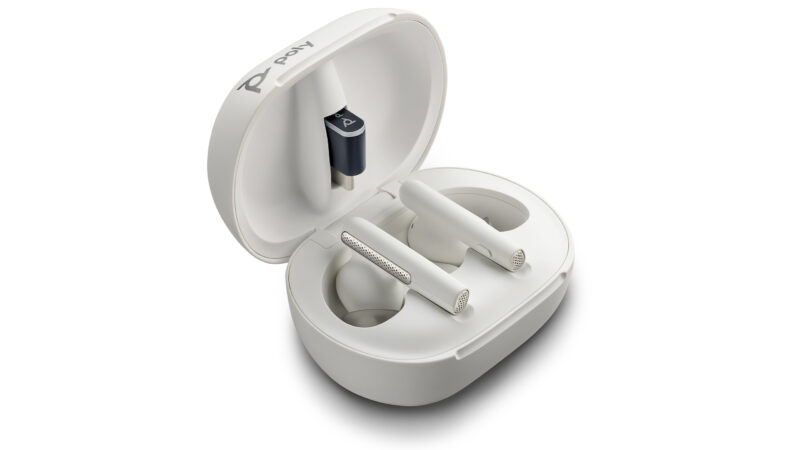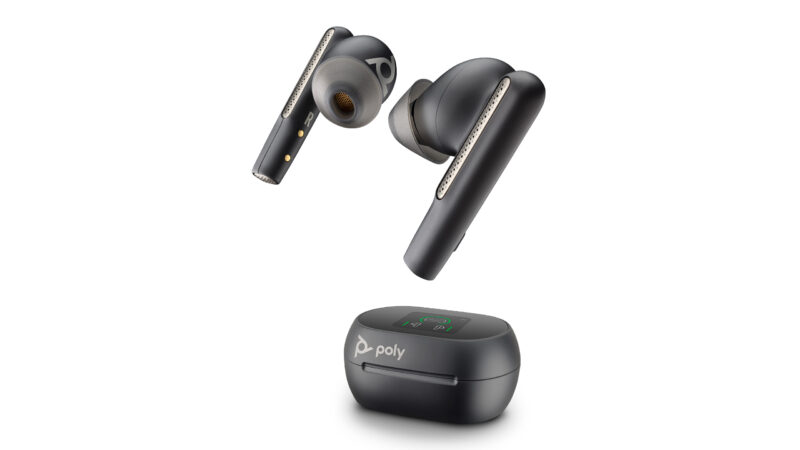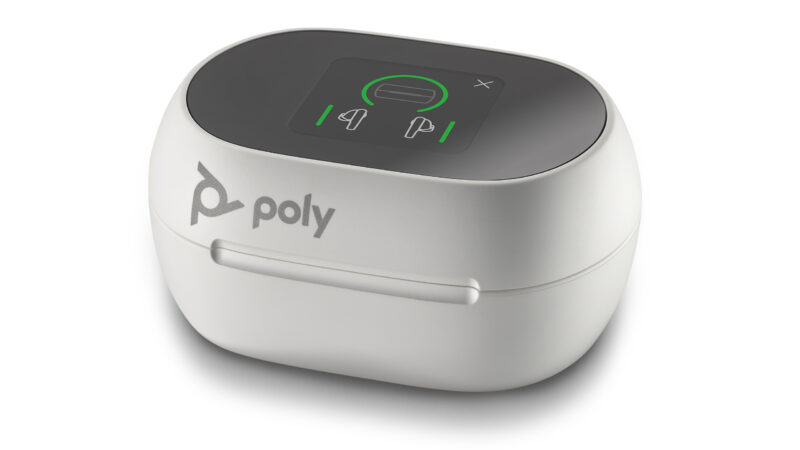Is it headphones or a headset for work – and who is the manufacturer? The Poly Voyager Free 60+ UC is hard to categorize. And the answers to the questions are not definitive…
Poly is an American manufacturer of telecommunications equipment, including headsets. Many people know the company’s products, including the Voyager series, under the name Plantronics, but after Plantronics bought Poly in 2018, they decided to rename the entire company Poly. And Poly has been part of HP since 2022. Are you confused…?!
Poly Voyager Free 60+ UC are completely wireless earbuds. What immediately sets them apart from the flood of cordless buds is the included USB adapter and the charging case, which is equipped with an LCD touchscreen.
Brilliant screen
I must admit, I was curious but also skeptical when I heard about the idea of putting a touchscreen on the charging case. But it’s actually brilliant because it addresses what is the biggest Achilles heel of wireless earbuds: ease of use.
Most earbuds are equipped with some form of touch control. But there’s so little space that it’s impossible to make the controls even remotely logical. So you end up switching songs or turning up the volume on the earbuds while trying to wiggle them into place in your ear canal.
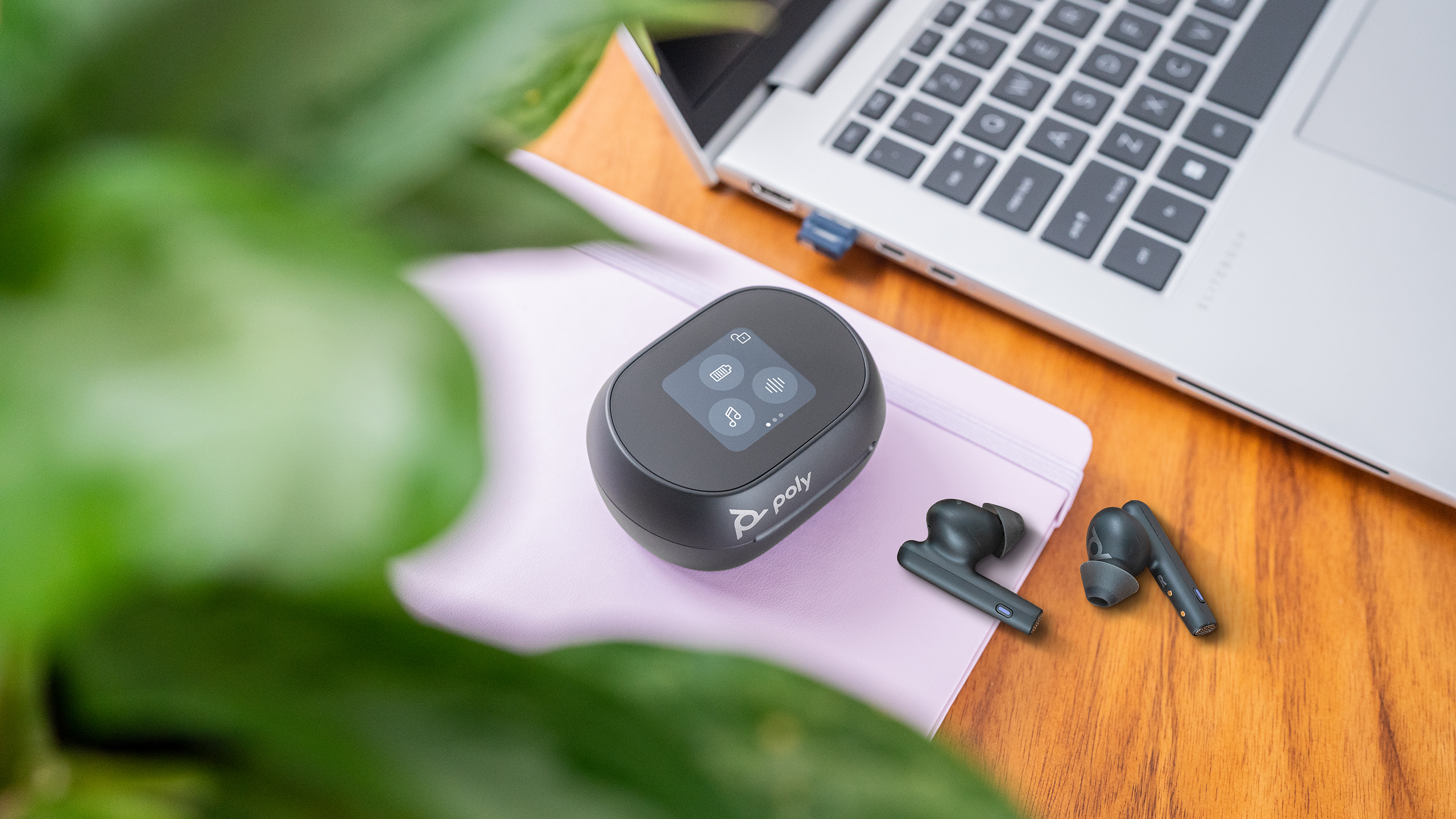
The small screen on the Poly case lets you choose between connected devices, perform Bluetooth pairing, adjust volume and change music tracks. Among other things. It’s all done via graphical menus that are so clear, you’ll never want to go back to the touch controls on the earbuds themselves again!
The only weakness of the on-screen controls is that the tiny computer in the case has a little too little power to control the display properly. This means that functions appear with a slight delay that, while short, feels like an eternity when you’re used to the fast response of a modern smartphone.
Made for remote working
The USB adapter is a Bluetooth adapter for connecting the earbuds to your computer. This may seem a bit redundant since all laptops already have built-in Bluetooth, but the adapter is also the path to the PC/Mac version of the Poly Lens app, which is used to manage and update the hearing aids.
The standardized adapter also ensures that all requirements are met when using the Poly Free 60+ UC as a headset for video conferencing. The earbuds are certified for use with Zoom, Google Meet, Google Voice and Microsoft Teams.

Of course, you can use non-certified wireless headphones or earbuds with video conferencing programs. But the certification guarantees that everything works as expected.
Special ear tips
Three sizes of ear tips are included, so you should be able to find one that fits. For me, the right one fit perfectly on my first try (size medium), while the left earbud needed the largest size to keep it from falling out of my ear. Switching to the larger size on both sides was best overall. However, I never achieved as tight a seal in the left ear as in the right.
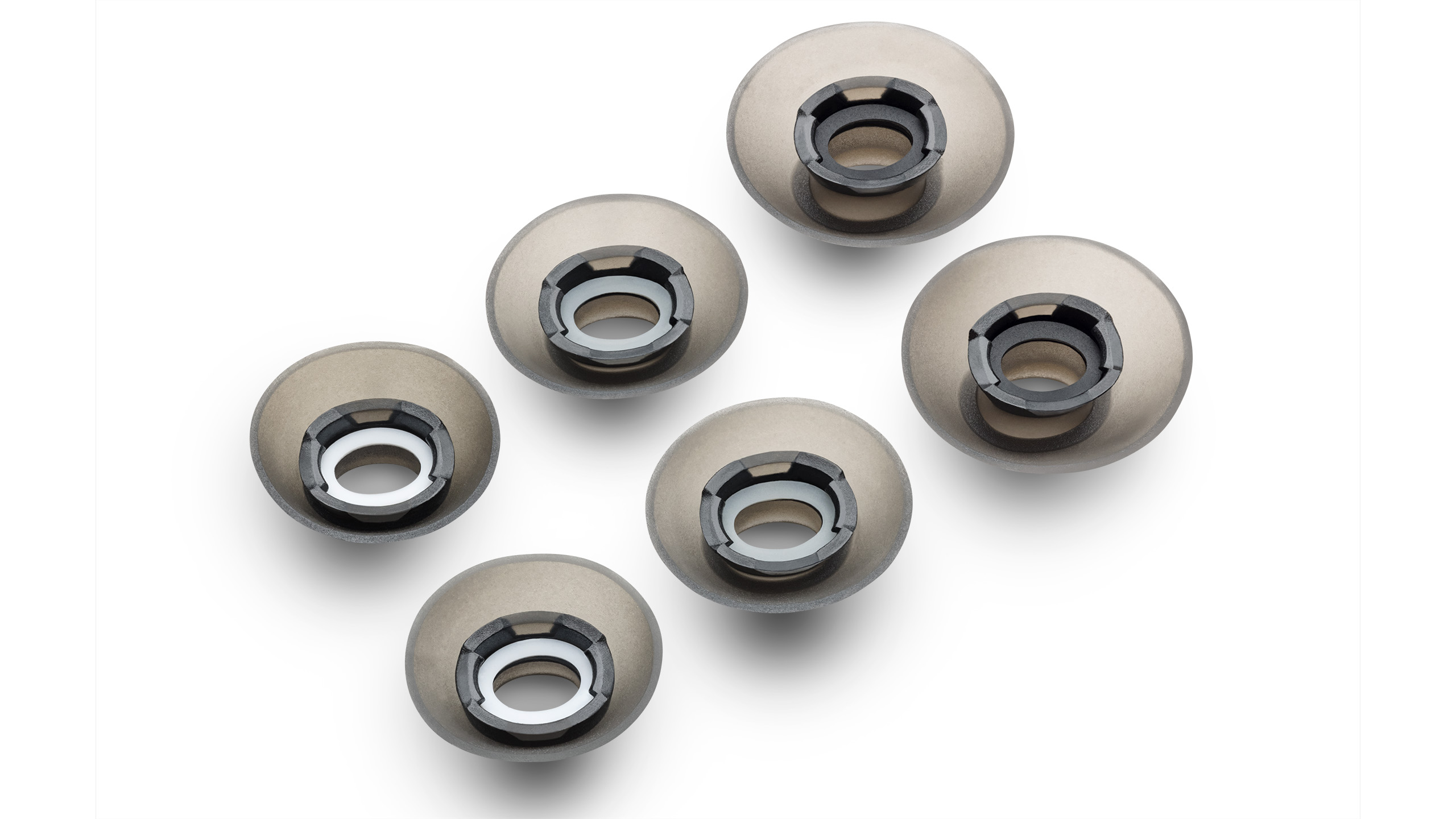
The tips are made of silicone rubber and have a special click mechanism that makes it easy to change them – once you’ve figured out the trick. However, this also means that you’ll have to use Poly’s own ear tips instead of the standard ones when the supplied ones wear out.
Poly Lens
The Poly Lens app provides access to firmware updates and a choice between ANC, adaptive ANC and two types of ambient sound (transparency). There’s also a very primitive EQ function that lets you choose between neutral, extra bass and extra treble. But there’s no option to create your own settings.
In this respect, Poly reveals that they are more used to dealing with headsets than headphones. While the sound functions are few, the app allows you to set the function of several sensors, the reaction to swipe gestures and the handling of phone contacts. Important features for a work tool.
Two types of mediocre ANC
The Poly Voyager Free 60+ UC has electronic noise cancellation. Which I would certainly expect from a set of earbuds in this price range. There is both a ‘regular’ ANC and an adaptive ditto that adjusts the noise reduction according to the noise level in the environment. There’s also a transparency mode, where ambient sound is sent into your ears through the microphones so you can hear what others are saying to you (and about you).
For office work or commuting by train and bus, the noise reduction is decent. But it can’t match the best established competitors in efficiency. And for a medium-length flight, the Poly Voyager Free 60+ wouldn’t be my first choice among completely wireless earbuds. On the other hand, the ANC’s negative impact on sound is minimal. Which makes sense for everyday use.

Also works as a single-ear headset
True to Poly’s history as a provider of business headsets, the Voyager Free can also be used one earbud at a time, so you can talk hands-free on your phone and still hear everything around you. Which, of course, you can also do with transparency mode turned on.
Sound quality
Poly/Plantronics is famous for their hands-free telephony headsets and I’ve had good experiences with them over the years for business use. And Zoom meetings are just an extension of hands-free phone calls. But for hi-fi?
The doubts turned out to be unfounded. In fact, the Voyager Free 60+ UC delivers some of the best sound I’ve heard in premium-grade, fully wireless earbuds.
Voices are not only clear (which I expected), but also crisp and colorless. And that goes for the rest of the frequency spectrum as well. The small plugs have a colorlessness that you could easily pay a lot more for.
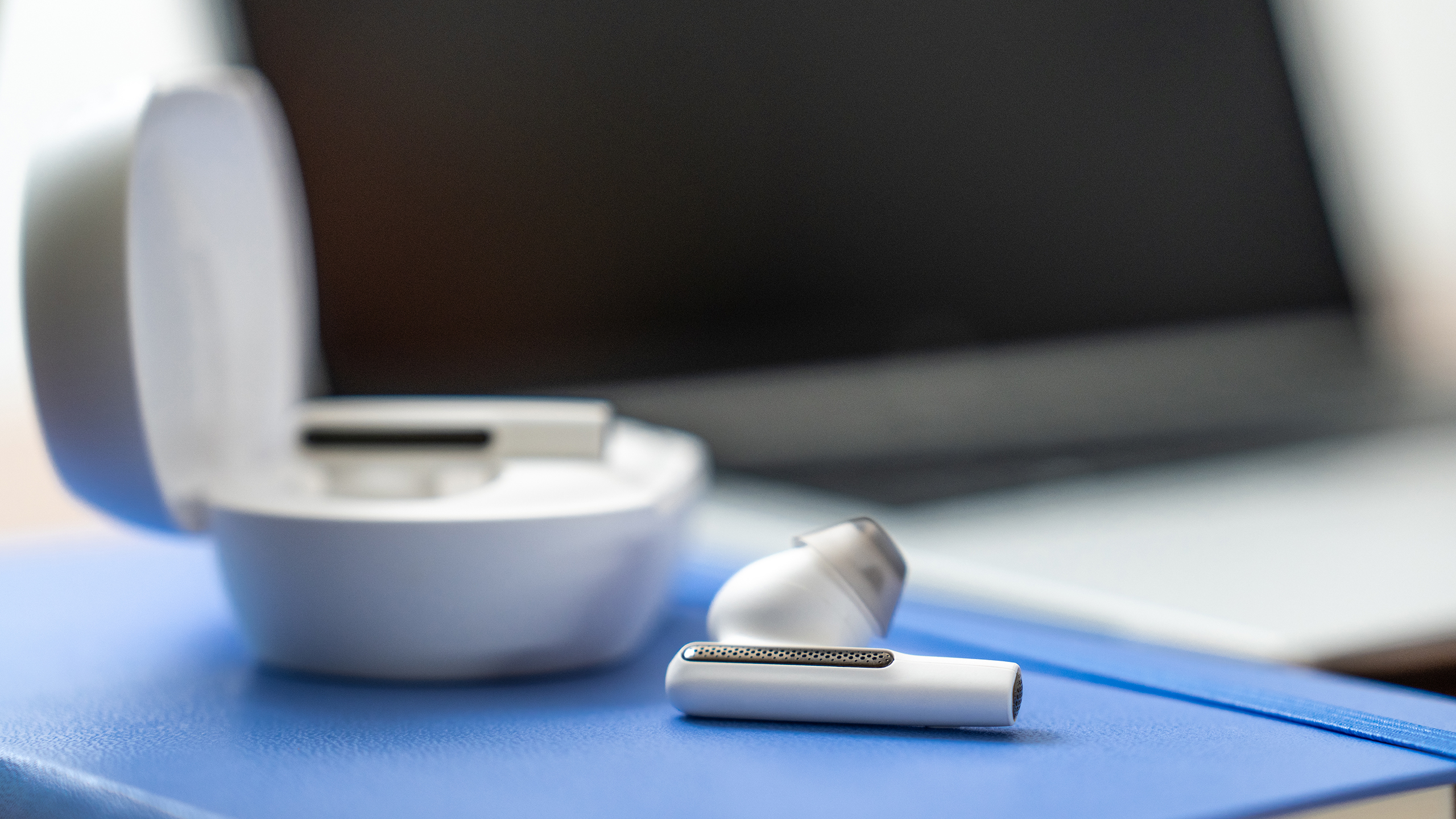
Conclusion
The Poly Voyager Free 60+ UC is not your typical wireless earbuds. They have some strengths – and for that matter, some weaknesses – that make them stand out from the crowd.
The biggest strength, in a hi-fi context, is the sound quality, which alone justifies the price. The sound is open and crisp, and you get something resembling proper hi-fi in your ears. Even with the noise reduction turned on. Voyager Free 60+ is largely free of the stuffiness that often accompanies ANC. The fact that the noise reduction is less effective is the flip side of the coin.
However, most people probably buy Poly Voyager Free 60+ UCs to use them for video conferencing. They are designed to work seamlessly with the leading video conferencing platforms. The fact that you also get fully wireless hi-fi headphones is like an added bonus.
The touchscreen on the case is sure to be the future of wireless earbud control. Hopefully, by then, the displays will also have more computing power, so we won’t have to deal with frustrating delays.

We think
The touchscreen on the case is a brilliant idea. One day all earbuds will have one. Good sound quality. The computing power in the case is not sufficient for the screen. The fit is tricky.
330 €
Specifications
- Type: In-ear, true wireless
- Drivers: (not stated)
- Frequency range: 20 – 20,000 Hz (tolerance not stated)
- Active noise cancellation: Yes, adaptive and with transparency mode
- Microphones: 3 per capsule
- Battery life: 8 hours listening / 5.5 hours talking with ANC (up to 24 hours listening / 16 hours talking with charging case)
- Protection: IP54
- Charging: USB-C and wireless (case)
- App: Poly Lens
- Connectivity: Bluetooth 5.3 (AAC, AptX, SBC, mSBC)
- Video conferencing: Certified for Zoom, Microsoft Teams, Google Meet and Google Voice
- Weight: 5.8g per capsule
- Web: poly.com


